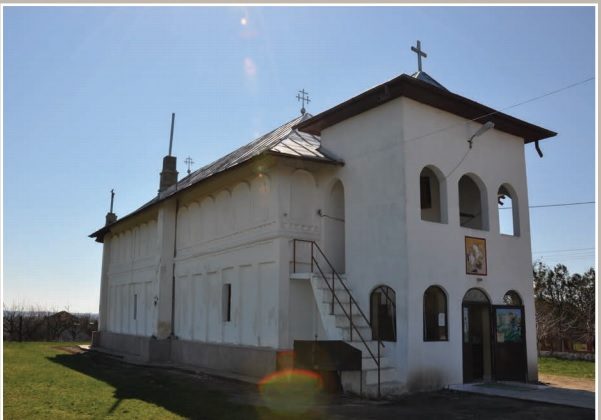

The church was built in 1577, during the reign of Alexandru Mircea, having as founder Dobromir ban of Craiova, together with his wife Vilaia and their son Mihail the seneschal. The church was restored in 1830 by Dorotei, abbot of Hurezi, and was, radically repaired a century later, between the years 1964-1968. According to the inscription, the church was restored again in 2011 “with the blessing of Metropolitan Irineu Slătineanu and His Grace priest Sebastian, Bishop of Slatina and of Romanaţi”.
The church was built rectangular, with the vault on gold tompets – an architectural element found in the next century, at the coverage of the peaks of the royal palaces from Plumbuita and Hurezi. The narthex, separated from the nave by an arched opening is covered with a monastic canopy. Runcu Mare is a village in the commune Grădinari, one of the important rural areas in the north of the county Olt. With an ancient history, evidenced by numerous monuments, placing its origins in ancient times of prehistory. Since ancient times, people have settled here due to the favorable conditions of living, represented by the meadow close to the river, the gentle water courses, with low-flow but permanent, the fertile soil of the region and terraces with numerous springs, favorable to winegrowing vines, fruit trees and vegetable gardens. The neolithic communities (Vinca, Vădastra) and those from the Bronze Age (Glina, Verbicioara) were established in this region, especially because nearby, there was the river Olt, one of the most important rivers in our country. The settlement was formed along the old Roman road which follows the course of the Olt river, being attested in the first half of the sixteenth century. The old name of the village is of Latin origin, runcus (read Runcu) designating a deforested place. Throughout the medieval period, the village Runcu passed from one boyar family to another, reaching, finally, during the reign of Constantin Brancoveanu in the property of Monastery Hurez. Near the bridge built in the late nineteenth century, is a drinking water source, one of the few sources of water for the villagers. Near was the old school, for primary education, a building with two classrooms and a orderly room. Later, after moving the school, have operated the House of Culture, a library and a hall for cultural activities and the kindergarten.
